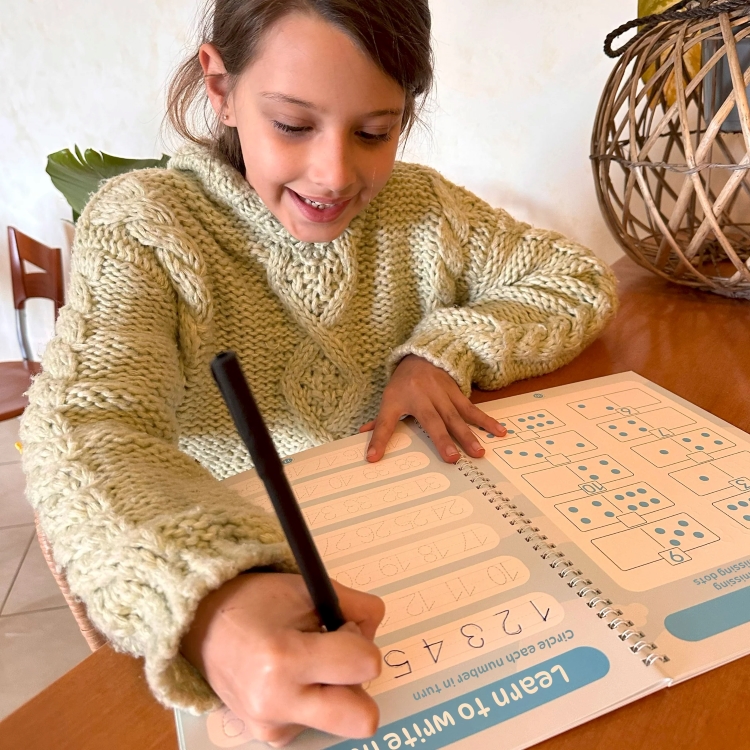It may seem less important to focus on teaching handwriting in the current digital era, but a child’s education and personal growth still heavily depend on their ability to write legibly. Writing has a practical component that is part of the learning process and goes beyond simple grammar, vocabulary, and spelling. In addition to improving communication abilities, good handwriting fosters self-expression, focus, and fine motor skills.
The Role of Handwriting Books

source: pexels.com
A targeting handwriting student book plays a big role in guiding students to develop neat and efficient handwriting. They are structured tools offering teachers and parents the support they need to help children improve their penmanship.
One notable series is the educational yet engaging Targeting Handwriting NSW books, which are known for their effectiveness in teaching handwriting skills. The NSW-targeting handwriting book is popular in New South Wales (NSW), Australia, and has been specifically designed to target the formative stages of handwriting for children at different grade levels.
The Targeting Handwriting NSW books have been developed with the curriculum standards of NSW in mind, focusing on the specific handwriting style taught in schools. These targeting handwriting books provide a structured approach that builds from basic letter formation to more advanced writing techniques, ensuring that students gradually develop their handwriting abilities logically and efficiently.
The target handwriting books are categorised by year level, providing exercises that are age-appropriate and progressively more challenging. Younger students start with basic shapes and lines, eventually working up to letter formation and simple words. As they progress, students are introduced to more complex writing tasks, such as joining letters and cursive writing, which help them transition smoothly through each handwriting stage.
Factors Affecting Handwriting
Writing by hand requires a variety of skills, including motor control, perceptual awareness, and cognitive understanding. Numerous circumstances might affect children’s handwriting, making it difficult for them to write effectively and accurately. When helping kids improve their handwriting, parents and teachers need to be aware of these elements.
Fine Motor Skills
Fine Motor Skills are the small muscle movements involved in writing. Strong fine motor skills are key for maintaining control over the pencil or pen and forming the letters with precision. Children with well-developed fine motor skills can produce smoother, more precise movements, resulting in neater handwriting.
Visual Perception
Visual perception is the ability to understand and interpret visual information correctly. This means understanding different shapes, spacing between letters and words and differentiating similar letters. Poor visual perception can result in unclear handwriting with letters being improperly formed.
Cognitive Development
Cognitive development plays a crucial role in handwriting and understanding letter formation, spacing, and writing conventions. Children need to process and remember how letters are formed and structured within words and sentences. They also need to apply rules like capitalisation, punctuation, and grammar.
Hand-Eye Coordination
The capacity to synchronise hand movements with visual stimuli is known as hand-eye coordination. This entails coordinating a child’s hand movements to form letters and words with what they observe. Accurate and fluid writing is a result of having good hand-eye coordination.
Tips for Improving Handwriting

source: pinterest.com
- Start Early: The earlier you start practising handwriting, the better. When children start learning how to form letters early on, it becomes easier to build on these skills as they grow.
- Encourage Daily Practice: Like any other skill, handwriting improves with regular practice. Taking a small amount of time every day, and making it a habit for your child to practise writing can significantly boost handwriting quality.
- Use the Right Tools: Providing the right tools for your child that are comfortable and easy to grip can make a difference in their writing abilities.
- Incorporate Handwriting into Fun Activities: Practising handwriting doesn’t have to be daunting and boring. By making it fun, children are more likely to engage and enjoy the learning process. For example, you could have your child write a story, draw a picture, or create a card.
Additional Tips for Improving Handwriting
- Create a Positive Learning Environment: Encourage a relaxed and supportive atmosphere where your child feels comfortable practising handwriting. Avoid putting too much pressure on them, as this can lead to anxiety and hinder their progress.
- Provide Feedback: Offer constructive feedback and encouragement as your child practises handwriting. Point out their strengths and areas for improvement, and provide specific suggestions for them.
- Celebrate Progress: Acknowledge and reward your child’s achievements, no matter how small. This will help to boost their confidence and motivation.
- Consult with a Specialist: If you have concerns about your child’s handwriting development, consider consulting with a handwriting specialist or occupational therapist. They can assess your child’s skills and provide targeted recommendations for improvement.
The Importance of Handwriting
Children’s academic and personal success depends on their ability to write legibly. By creating a nurturing and stimulating atmosphere, parents may assist their kids in improving their handwriting abilities and general literacy. Parents and teachers can benefit greatly from resources such as a handwriting book that targets handwriting in NSW.
These books offer targeted exercises and activities to help children improve their handwriting, letter formation, and spacing. You can also consider implementing popular teaching methods at home with your kids which can be beneficial.

